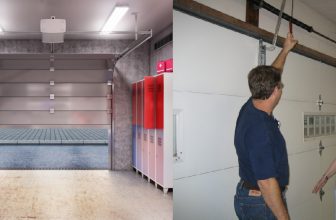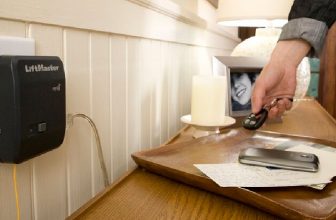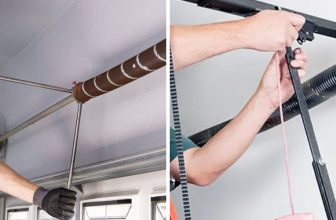How to Heat a Garage Without Electricity
If you’re like most people, your garage is the default storage area for all of those must-haves that don’t have another designated spot. Yet with winter slowly settling in, you may be concerned about how to keep your garage warm and comfortable – especially if it’s not easily accessible to electricity.

Fear not, because there are plenty of ways to heat up a garage without using electricity! In this blog post, we’ll cover the various ways how to heat a garage without electricity and without having to worry about cords or costly energy bills. From fireplaces and space heaters to even some DIY methods, we’ll show you how heating your garage doesn’t need to involve any plugs at all!
What’s the Most Efficient Way to Heat My Garage?
When it comes to heating a garage without electricity, the most efficient way is to use propane or natural gas. Propane and natural gas are clean-burning fuels that produce heat quickly and efficiently with minimal effort. They are also much easier to install than electric heaters. When installing propane or natural gas, you will need to consult a professional in order to ensure you have the necessary equipment and safety measures in place.
Other options for heating your garage include wood stoves or pellet stoves, as well as kerosene heaters. Wood stoves require regular maintenance and feeding of fuel, while pellet stoves require small pellets of compressed biomass materials like sawdust which can be costly due to the cost of the pellets and storage space needed. Kerosene heaters are inexpensive and easy to use, but they produce fumes that can be dangerous if not properly vented.
Finally, solar-powered heating is also an option for those looking to heat their garage without electricity. Solar energy systems require no installation costs and the power of the sun is free, although the efficiency of solar energy may be limited by the lack of sunlight in certain areas.
No matter which heating option you choose for your garage, it is important to make sure that any fuel-burning heaters are properly vented and that all safety precautions are taken. With the right setup and a bit of research, you can enjoy the warmth of a well-heated garage without the need for electricity.
10 Methods How to Heat a Garage Without Electricity
1. Using a Kerosene Heater
Kerosene heaters are a type of portable heater that can be used to heat a garage without electricity. Kerosene heaters work by burning kerosene, which produces heat that can be used to warm up a space.

Kerosene heaters are relatively inexpensive and can be found at most hardware stores. The only downside to using a kerosene heater is that it can produce carbon monoxide, so it’s important to make sure the area is well-ventilated while using one.
2. Using a Propane Heater
Propane heaters are another type of portable heater that can be used to heat a garage without electricity. Propane heaters work by burning propane, which produces heat that can be used to warm up a space. Propane heaters are more expensive than kerosene heaters but can be found at most hardware stores.
Propane heaters are also quite safe and efficient as they produce no smoke or soot while burning. However, they do require a direct vent to the outside, so it is important to check with local regulations to make sure you are able to use a propane heater safely in your space.
3. Using a Wood-Burning Stove
Wood-burning stoves are a type of stationary heater that can be used to heat a garage without electricity. Wood-burning stoves work by burning wood, which produces heat that can be used to warm up a space. Wood-burning stoves are more expensive than portable heaters but can often be found second-hand.
Make sure to buy a stove that is designed specifically for heating garages and not just any wood-burning stove. When using a wood-burning stove, be sure to use only dry wood and never overfill the stove. Make sure there is adequate airflow in your garage so that the heat generated by the stove is distributed evenly. Also, be sure to check that your garage has proper insulation and ventilation before using a wood-burning stove.
4. Using an Oil Drum Heater
Oil drum heaters are a type of homemade heater that can be used to heat a garage without electricity. Oil drum heaters work by filling an oil drum with oil and then igniting the oil, which produces heat that can be used to warm up a space. Oil drum heaters are less expensive than wood-burning stoves but can take some time and effort to build.
5. Using Candles
Candles can be used to generate small amounts of heat that can help to warm up a garage without electricity. Candles should not be the only source of heat in a garage, as they will not generate enough warmth on their own, but they can help to take the chill off of the air. Candles should be placed in strategic locations around the garage in order to maximize their effectiveness.

For example, placing a few candles in the corner near the door can help to create a barrier of warmth between the outdoors and the interior of the garage. Additionally, strategically placed candles can help to create pockets of warmth around the interior of the garage.
6. Using Solar Panels
Solar panels can be used to generate electricity that can then be used to power electric space heaters or other appliances in a garage. Solar panels are more expensive than other heating methods but offer the benefit of being renewable and environmentally friendly. Solar panels must be placed in an area where they will receive direct sunlight in order to work effectively.
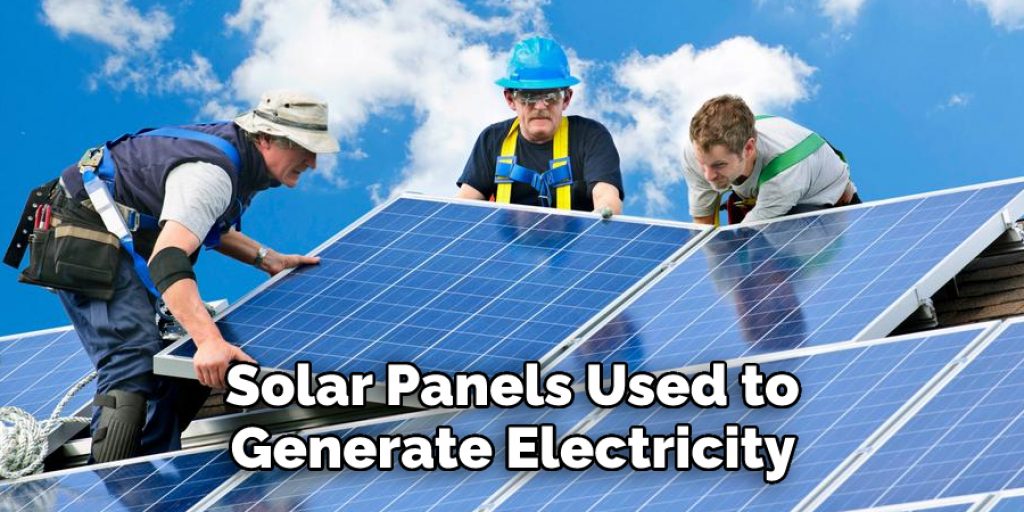
If the garage does not get direct sunlight, solar panels may still be an option but may not generate enough electricity to properly heat the space. Additionally, solar panels require professional installation and regular maintenance, which can add to the cost.
7. Using an Insulated Garage Door
An insulated garage door will help to keep warmth inside of a garage and prevent cold air from coming in. Insulated garage doors are more expensive than non-insulated doors but will pay for themselves over time in terms of energy savings.
Insulated garage doors must be installed by a professional and require some maintenance over time. However, adding insulation to an existing garage door can be a DIY project. Sealing any gaps around the door frame will also help to keep the heat in.
8. Using a Heat Lamp
A heat lamp is a type of electric heater that can be used to generate localized heat in a garage without electricity. Heat lamps are relatively inexpensive and easy to install, but they will not generate enough warmth on their own to heat an entire garage. Heat lamps must be placed in strategic locations around the garage in order to maximize their effectiveness.
Additionally, it is important to ensure that the heat lamp is properly ventilated in order to prevent a fire hazard. Placing an exhaust fan near the heat lamp will help to circulate the air and prevent overheating. With proper installation and ventilation, a heat lamp can be an effective way to heat a garage without electricity.
9. Using Reflective Insulation
Reflective insulation is a type of material that can be installed inside a garage wall or ceiling in order to reflect heat back into the space. This type of insulation comes in rolls and can be installed with staples or adhesive. Installing reflective insulation is a great way to help conserve energy and keep the temperature inside your garage more comfortable.
It’s important to note that this material should not be used in place of other types of insulation but rather as an additional layer of protection against heat loss. Additionally, reflective insulation should be installed correctly in order to ensure that it provides the best performance.
10. Using a Solar Air Heater
A solar air heater is a type of homemade device that uses the power of the sun to generate heat inside a garage or other space. It is a simple and affordable way to heat up a garage without electricity. To make a solar air heater, you will need some materials such as 2x4s, plywood, aluminum foil, insulation, screws and nails, duct tape, and PVC pipe.
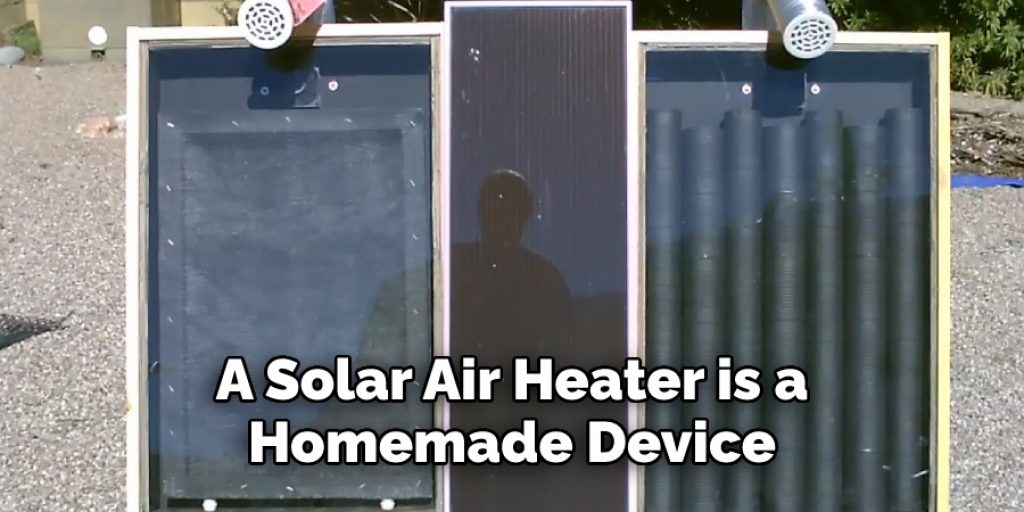
First, construct the frame of your solar air heater by nailing the 2x4s together in a box shape. Next, cover the frame with plywood and line the inside of the box with aluminum foil. Then, fill the walls of the box with insulation to help keep heat trapped inside.
Conclusion
There are a variety of ways to heat your garage without using any electricity. Depending on the level of insulation in your garage, you may be able to get away with using a space heater, an oil-filled radiator, or even candles.
If you have poor insulation, however, you may need to look into alternative methods, such as installing a wood stove or pellet stove. Whatever route you decide to take, make sure that you take the necessary safety precautions to avoid any accidents. Thanks for reading, and we hope this has given you some inspiration on how to heat a garage without electricity!

